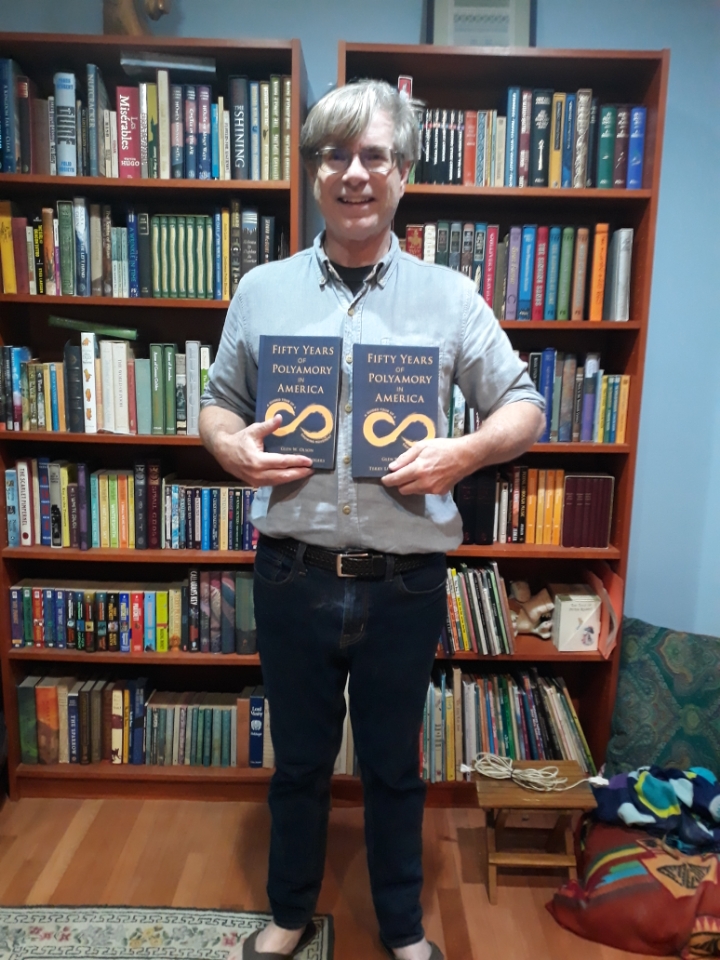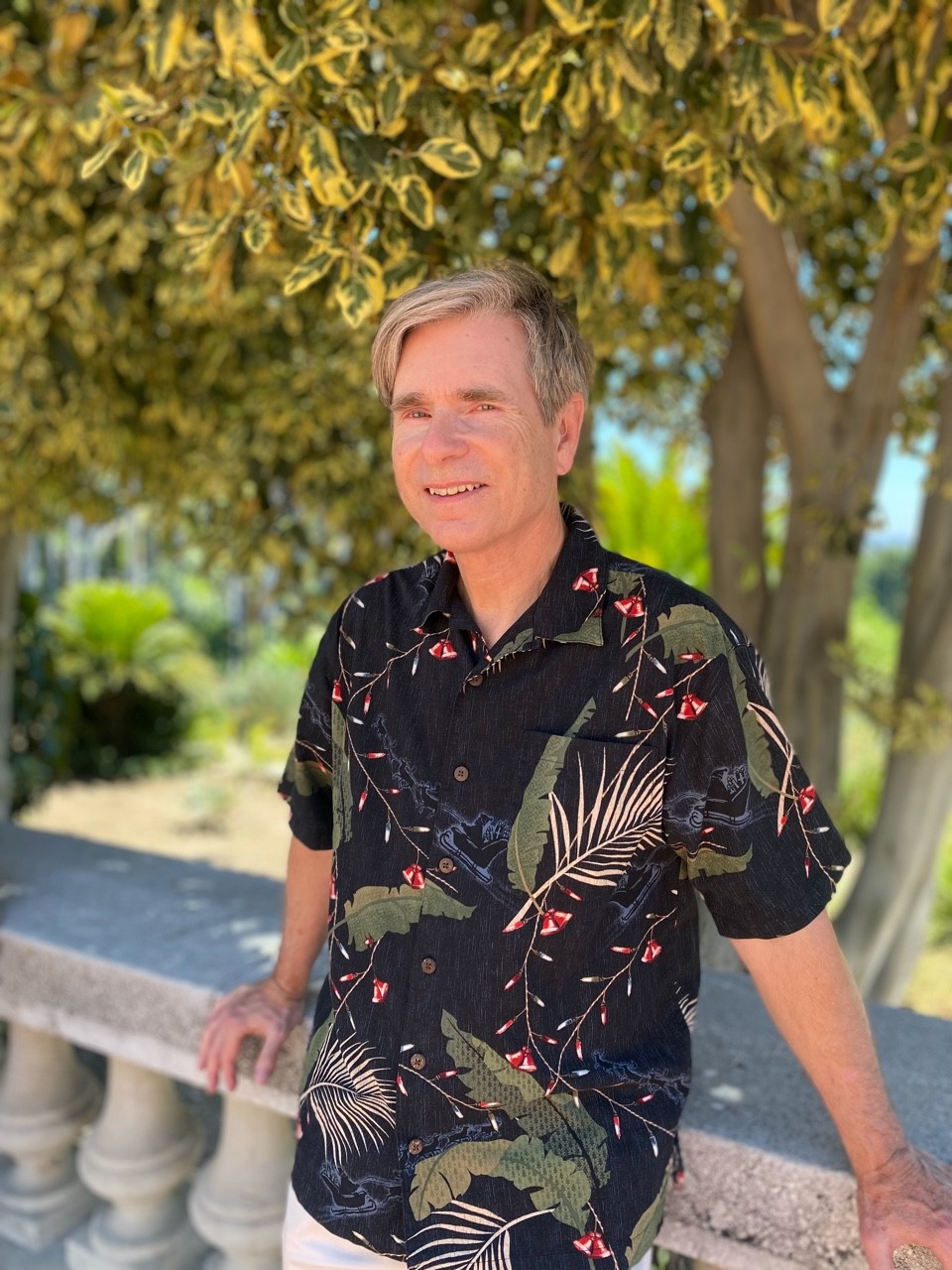We caught up with the brilliant and insightful Glen Olson a few weeks ago and have shared our conversation below.
Alright, Glen thanks for taking the time to share your stories and insights with us today. What did your parents do right and how has that impacted you in your life and career?
I grew up in the San Fernando Valley, a suburb of Los Angeles. I would have had an absolutely normal childhood except for one fact: my best friend’s father worked in Cold War aerospace . . . and my friend’s father owned a mimeograph machine. (Okay raise your hands, who knows what a mimeograph machine is? You do? Awesome.)
So along with a dog, a bicycle, and baseball mitt, my friends and I had access to a device that allowed us to put out a neighborhood newspaper— and we shamelessly did so!
My parents bought the first issue of our newspaper, “The Garber Star”, and encouraged us to write more.
I knew nothing about paper supplies, or ink, or marketing- or distribution! My friends and I learnt all of this over that summer, with many hints from our parents. This encouraged my lifelong love of writing.
One of the key lessons I learned from my dad while I was growing up is the importance of being a generalist- by that I mean, have the ability to do more than one skill well that will pay you a wage. He grew up during the depression years and believed that a person needed to have marketable skills in more than one trade or profession, so if the economy goes bad for one industry, a person can shift to another type of job and keep the roof over your head.


Awesome – so before we get into the rest of our questions, can you briefly introduce yourself to our readers.
I took my parents advice about having multiple life skills to heart, so in between bouts of going to college I picked up skills as a truck driver, a short order cook, and a meat cutter. In my next career, I became a paramedic for a fire department. As part of my medical background, I took training as a lay midwife. In the fire dept I had several roles, including disaster preparedness educator, inspector, and captain, writing training manuals by day and fiction by night.
I am a trained scuba diver and have toured the continent on a motorcycle. Today I am a full-time writer, and all my experiences tend to wind up on the pages of my novels. I am the author of Desperate Endeavor, a hard science fiction novel favorably reviewed by Kirkus magazine and recommended to librarians: “A well-written and compelling SF novel, with an older, wiser, battle-hardened hero. Earth maintains an uneasy peace pact with an alien race in Olson’s SF novel.
Mikail Benson remembers the war with the AranthChi well; it still haunts his sleep (“In his worst dreams, the dead floated in the void with him, close enough to touch, too late to help”). The long conflict saw much suffering and many lives lost…and its end was just as much of a surprise as its beginning. After years of bloodshed, the alien race suddenly wanted to talk of peace, and of working together to share information and technology.
Mikail now runs the Office of Alien Technologies, reviewing the questions and answers that go from humans to AranthChi and back. Despite what so many others seem to think, Mikail is not convinced peace will last.”
I am also an historian of the Polyamory movement and am the co-author of Fifty Years of polyamory in America: A guided Tour of a Growing Movement. Fifty Years of Polyamory in America: A Guided Tour to a Growing Movement is unique among the many books about polyamory because the scope of this book is the entire history of the polyamory movement. Instead of concentrating on the experiences of a few people exploring alternate lifestyles, it is an exploration of two generations of Americans, the people and the organizations they founded, what they have chosen to do, and how it has changed their lives and affected the culture as a whole. Written in an entertaining and easily accessible style, the authors cover the history of alternative sexual relationship styles starting with a quick peek at colonial times, the Mormon and Oneida movements of the 1840s-70s, and modern influences starting in the 1950s.
My newest novel is Tears of a Thousand Years, coming out in January 2026 and has already gotten great reviews from other SF authors. “On her first assignment as a Rememberer, Vega travels to Small Home, the newest planet the Race adopted. The planet’s inhabitants, the Caelings, are a friendly native species with an agrarian culture. Vega has heard reports of a native who performs miracles, and she wants to record him and other Caelings for her
people because she knows that someday the Caelings will be gone. She takes her younger brother to assist her and travels into the back-country to find this miracle worker.
When Vega meets him, she believes he is a charlatan until Tantea picks out the star she comes from in the night sky. and convinces her. Yet, a miracle worker is hard to fool. When he finds out the Race’s longevity and indifference always result in Vega’s people destroying the native populations with their careless-
ness, he becomes furious and decides to grant Vega a miracle she inadvertently asked for—one that will throw her entire civilization into chaos but gives her people a chance at redemption.”
Lauren Cipollo, and Matt Conant, science fiction authors and owners of Cinevore Studios/ Cinevore Games writes
““Glen Olson doesn’t just ask what happens when an intelligent
species is held accountable for its actions—he dares to imagine that
they might respond with grace, empathy, and transformation.”
—Lauren Cipollo, co-author of the Parallax series
“With the grandeur and intricacy of Asimov’s Foundation and
the ethical clarity of Star Trek at its peak, Olson crafts a sweeping
interstellar epic that never loses sight of its human core—even
though there’s not a human to be found.”
—Matt Conant, co-author of the Parallax series
“Tears of a Thousand Years is a heartfelt tale of memory, empathy, and transformation
wrapped in an epic science fiction adventure. Spanning a millennium, the story weaves the tales of two Remembers, nearly
a thousand years apart in time, charged with preserving their
culture amid apathy, waste, and carelessness. The task feels dis-heartening and tragic for the Remembers. But when a seer from
a dying race creates a miracle, the soul of an entire civilization
awakens. What happens when a race becomes enlightened and
desires atonement and healing? If you want a thrilling page-turn-er with deep characters, and unique, yet accessible sci-fi, Tears of
a Thousand Years is for you.”
—Brian Fitzpatrick, author of the Mechcraft series


What else should we know about how you took your side hustle and scaled it up into what it is today?
When starting in any new industry or new endeavor, you have to learn the basics- it is probably not an overstatement to say that when you start, you don’t know what you don’t know, you may not even know what questions to ask. I had already been writing training manuals for my fire dept the day I decided to write my first novel, so I thought I knew how to write.
I boldly began my novel- and found I had to think in ways I had never practiced. I mentioned I had begun a novel to Steven Barnes, a very accomplished novelist, screen, and script writer, and he said “Great, writing a novel is a long process, with many steps, tell me, how many short stories have you written?’
I said, “hmm, well…none?”
He blinked a few times and said gently, “stop writing the novel and write a short story.” So I did. And when I tried to go back to the novel he said, “write another short story.”
I kept writing short stories until I had enough to fill a book- and I started submitting them to writing contests. One of my short stories recieved honorable mention from, the Writer’s of the Future Contest. And those short stories wound up in a book of short stories. My first published book, “A choice of Planets”


Alright – let’s talk about marketing or sales – do you have any fun stories about a risk you’ve taken or something else exciting on the sales and marketing side?
I was writing my non-fiction book on the history of polyamory in America, and I had been advised that an agent would be very helpful in placing the book with a major publisher. I already had a small idea of how to query publishers, but I had never quired an agent. So, I started to do yet more research. I went to some of my writer friends for advice and read articles from Writer’s Digest. Then I wrote a query letter and crafted a book pitch. My first attempt was not very good, nor was my second attempt. But I am stubborn, and I persisted.
Eventually I learned enough of the arcane craft of query writing that agents started responding to my letters. I hit my stride and in one year I sent out 70 query letters. And got back 70 rejection letters.
Did I quit at that point? No, Several agents had complimented me and let me know I had actually worked up quite a good book pitch, even though they were not going to take on my project. So, I took my query letter and book pitch and started sending them out to publishers. The editor at the third publishing house I queried asked me to send her the manuscript…and she bought the book.
Thank you so much for inviting me here today, to be a part of the Canvas Rebel experience.
Glen Olson
Contact Info:
- Website: https://glenolson.org
- Facebook: https://www.facebook.com/profile.php?id=100067033536386
- Linkedin: https://www.linkedin.com/in/glen-olson-039084191/
- Twitter: https://x.com/GlenOls73100507
- Other: Medium Magazine: https://medium.com/@glenolson


Image Credits
None


